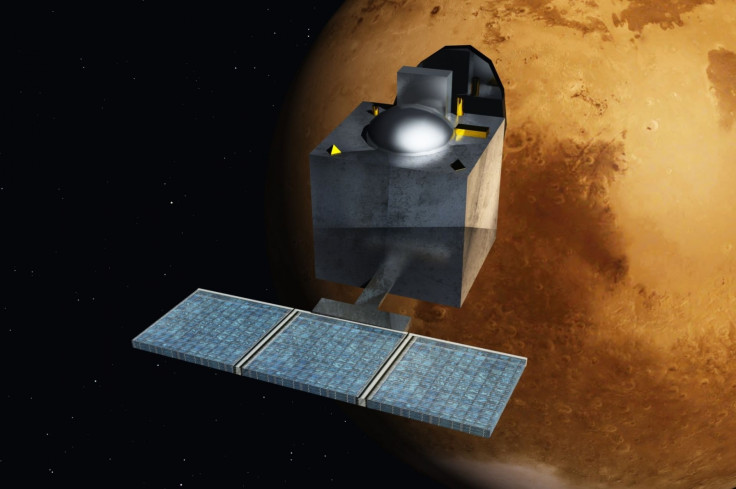India Places Probe in Mars Orbit; Enters Space Power Super League
India Becomes First Nation to Place a Martian Probe in Elliptical Orbit in First Attempt

In yet another demonstration of its space technology, India's space agency Isro has placed its Mars Orbiter Mission spacecraft in orbit around the Red Planet.
With this, India joins an exclusive club of global space powers, being the fourth only after the US, Russia and EU to place a satellite in orbit around Mars.
India has also become the first nation to place a Martian probe in orbit in the first attempt. Roughly half of all space craft sent to Mars have crashed or gone off course.
Prime Minister Narendra Modi, who was present at Isro's Telemetry Tracking and Command Network centre in Bangalore, said the achievement has set India on course to becoming a world leader in space technology.
The text-book operation saw the reorientation of the spacecraft to align it for velocity reduction following which the main liquid apogee engine was fired along with eight other smaller engines for about 24 minutes. This brought the speed of the space craft sufficiently low to allow the planet's gravity to capture it into orbit.
The communication lag of 12 minutes for signals from the probe combined with a period of Mars occult resulted in a communication blackout of nearly 20 minutes.
For tense space personnel, the signal showing velocity variation of 1098.7 metres per second came as confirmation of the speed braking and probe being placed in orbit.
The 1350 kg satellite has performed autonomously going by the commands uplinked a few days ago. The whole operation on Wednesday depended on the execution of the commands when the probe was within a small circle of less than two kilometres.
The medium gain antenna was used for communication during orbit insertion. All telemetry signals henceforth are being sent from the high gain antenna which was turned around after the firing to face the earth.
Nasa's three ground stations at Goldstone in California, Madrid in Spain and Canberra in Australia monitored the orbit insertion along with Isro's Deep Space Network at Bylalu, Bangalore.
Launched on 5 November, 2013, from India's spaceport at the Satish Dhawan Space Centre, Sriharikota, by the organisations' tried and tested warhorse -- the indigenous four stage Polar Satellite Launch Vehicle -- the craft has travelled nearly 700 million kms in its sun-centric arc towards Mars.
It left the earth's sphere of influence spanning 9.25 million kms on December 4, 2013 after six orbit manoeuvres around Earth.
With just a couple of million kms left to cover as on Tuesday, the probe had been moving exactly as planned and did not even require the expected trajectory correction planned last month. The last such manoeuvre was performed on 11 June by firing the spacecraft's thrusters for a duration of 16 seconds.
The 440 Newton Liquid Apogee Motor, last fired on 1 December, 2013, was successfully fired for a duration of 3.968 seconds on Monday. This operation was also used for the spacecraft's trajectory correction and changed its velocity by 2.18 metre/second.
Designed and developed by the Indian Space Research Organization at a low cost of $73 million, this was meant to prove technological capability at minimal cost. The whole project was conceptualised, planned and executed in less than three years.
Equipped with five indigenous instruments that include a multi-colour imager and a methane gas sniffer, the probe will study the atmosphere and the soil of the planet.
The $73m Indian orbiter was preceded barely two days ago by Nasa's MAVEN orbiter. Together they join a fleet of three other orbiters from Nasa and ESA.
© Copyright IBTimes 2025. All rights reserved.





















